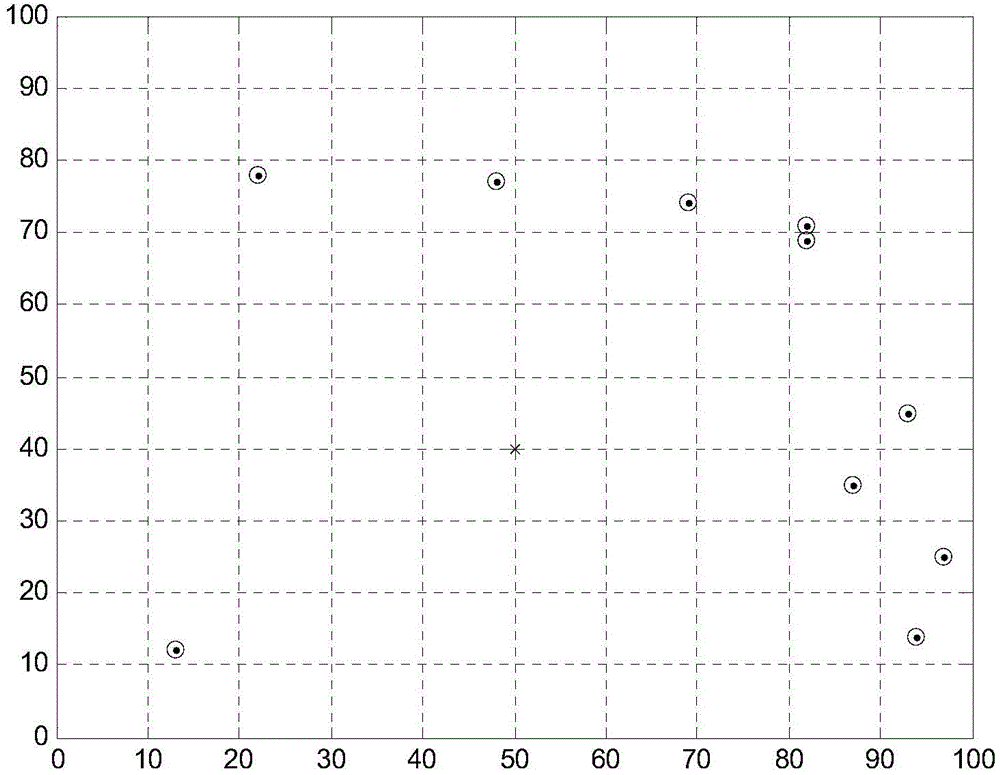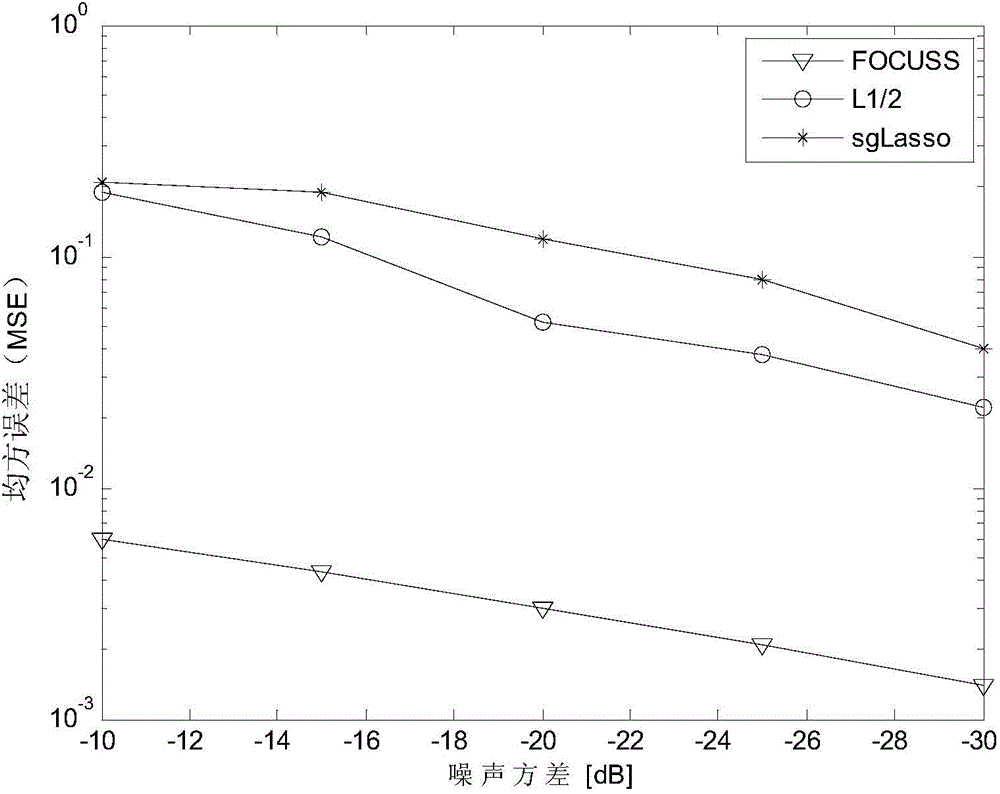Cooperative spectrum sensing method based on cluster sparsity
A cooperative spectrum sensing, group sparse technology, applied in the field of cooperative spectrum sensing based on group sparse
- Summary
- Abstract
- Description
- Claims
- Application Information
AI Technical Summary
Problems solved by technology
Method used
Image
Examples
Embodiment Construction
[0036] The present invention is described in further detail below in conjunction with accompanying drawing:
[0037] The cooperative spectrum sensing method based on group sparseness described in the present invention comprises the following steps:
[0038] Let N m primary users are distributed in geographical area A, N m The location set of each primary user is N t Cognitive users are also distributed in the geographical area A, in the monitoring of the broadband B, set the position x of the cognitive users in the geographical area A t is known, the position of the primary user transmitter is unknown, and the channel h mt (n; l) the primary user location x m to cognitive user position x t The channel impulse response of the lth path, u m (n) is the transmitted signal of the mth primary user, u m (n) with channel h mt (n; l) independent, then the cognitive signal y received by user t t (n) is:
[0039] y t ( ...
PUM
 Login to View More
Login to View More Abstract
Description
Claims
Application Information
 Login to View More
Login to View More - R&D
- Intellectual Property
- Life Sciences
- Materials
- Tech Scout
- Unparalleled Data Quality
- Higher Quality Content
- 60% Fewer Hallucinations
Browse by: Latest US Patents, China's latest patents, Technical Efficacy Thesaurus, Application Domain, Technology Topic, Popular Technical Reports.
© 2025 PatSnap. All rights reserved.Legal|Privacy policy|Modern Slavery Act Transparency Statement|Sitemap|About US| Contact US: help@patsnap.com



